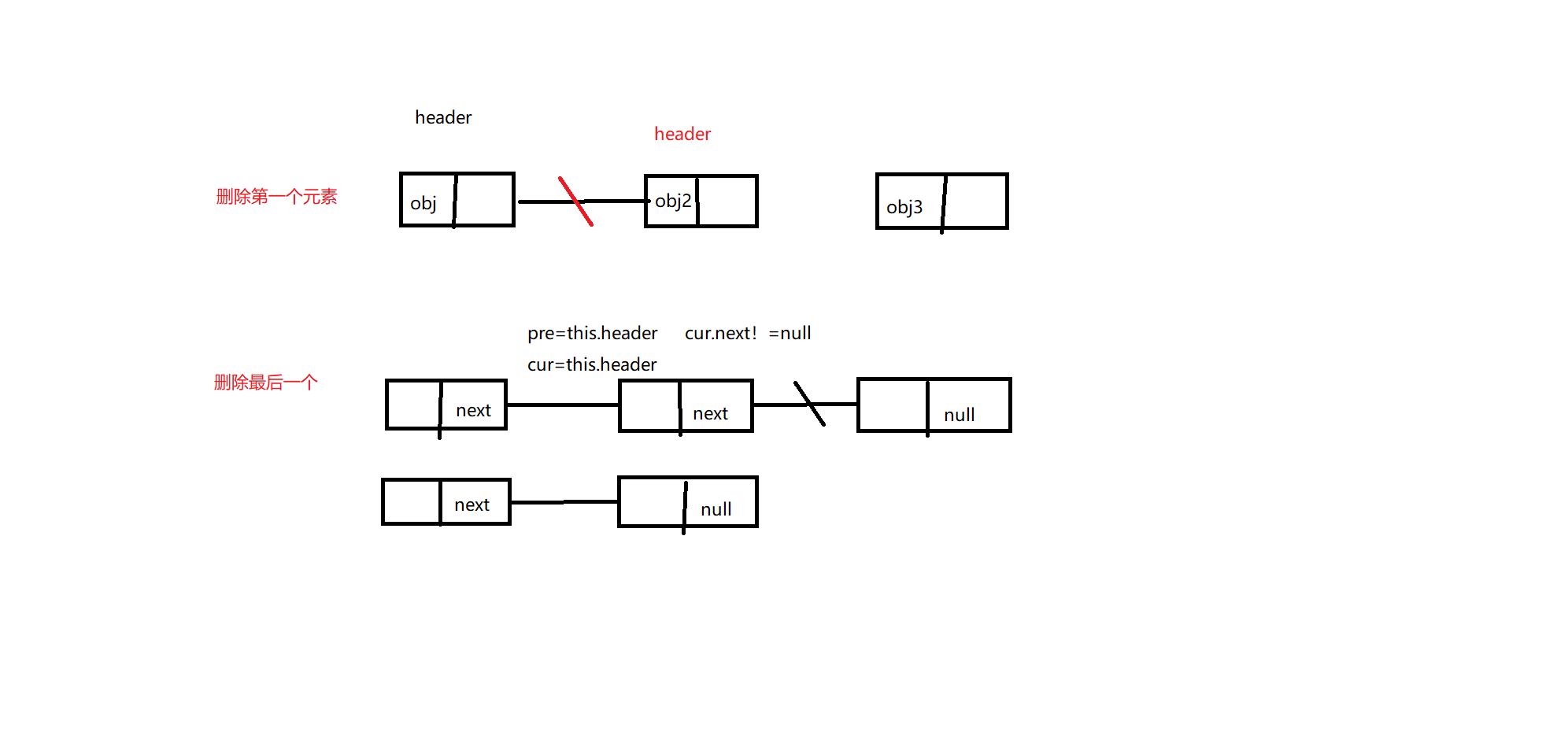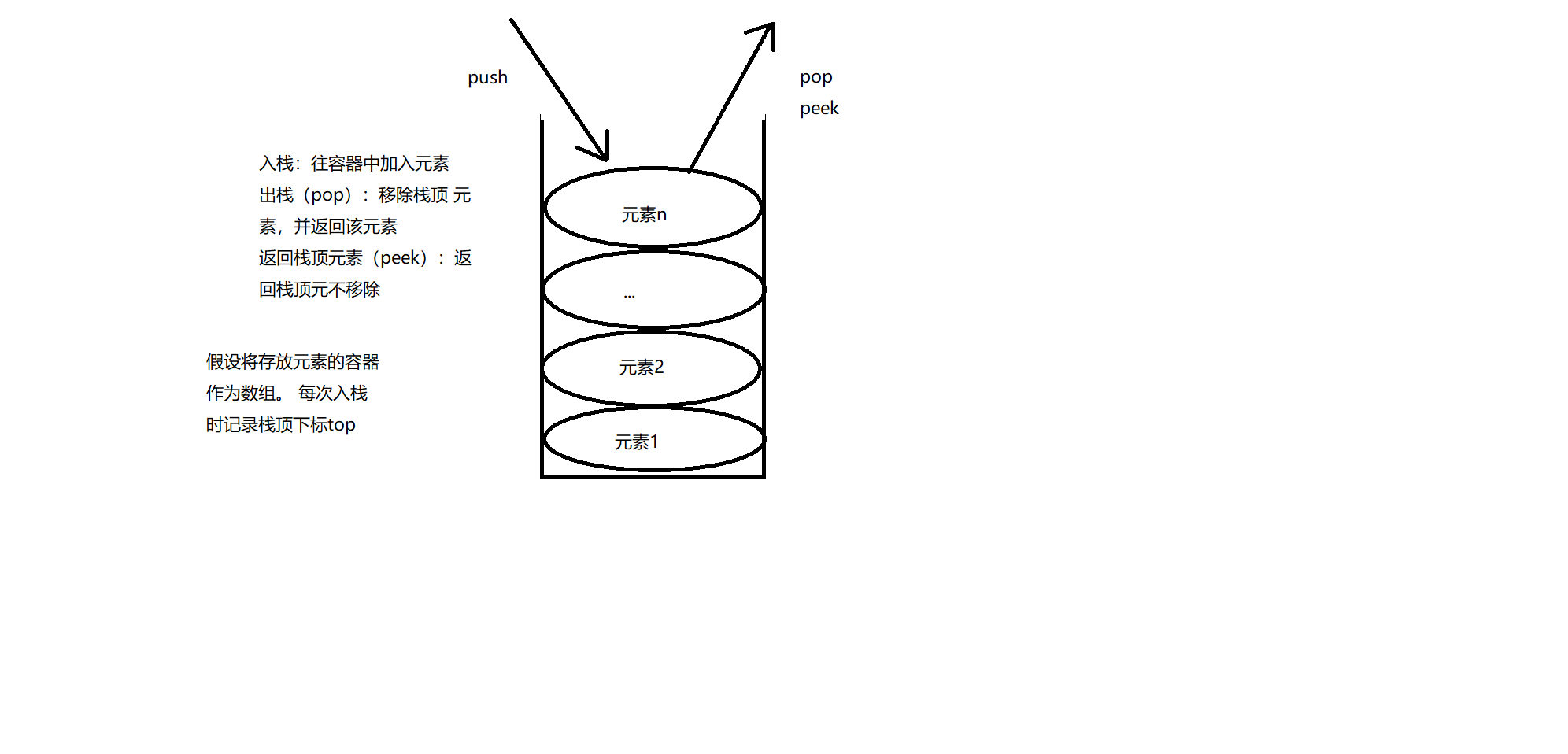标签:tno || system sdn 设置 copy 基础 mic 消息
所谓单链表(Linked)在内存中不连续的一段内存空间,链表的每一个元素是一个节点,每一个节点由数据元素和下一个节点的存储位置组成,链表结构与数组结构最大区别是链表结构的存储内存是不连续的,而数组结构的内存是连续的,链表结构不能与数组结构一样快速查找
? 链表机构操作特点是:添加,删除元素效率高,查询效率低;
? 数组结构特点:添加,删除效率低,查询效率高
链表结构的示意图

前驱:该节点的上一个元素的地址
后继:该节点的下一个元素的地址
链表结构中最后一个元素的“后继”为null
public class MyLinked {
//链表中有节点属性
Node header;//度过有一个节点,name这个节点就是头结点
int size;//链表节点的大小
//节点类 包括节点的数据内容和下一个节点的地址
class Node<T>{
//表示节点数据内容
T data;
//下一个节点的地址
Node next;
public Node(T data){
this.data=data;
}
public T getData(){
return data;
}
public void setData(T data){
this.data=data;
}
public Node getNext(){
return next;
}
public void setNext(Node next){
this.next=next;
}
}
链表实现添加元素

/**
*将元素添加到第一个节点
*/
public void addFirst(Object obj){
//创建节点
Node node=new Node(obj);
//整体要求:将当前链表的头结点变更为新节点
//新节点中的后继是原始头节点
node.next=this.header;
//将头节点变更
this.header=node;
//长度加1
this.size++;
}
/**
*添加到最后
*/
public void addLast(Object obj){
Node node=new Node(obj);
//找到最后一个节点
Node lastNode=this.header;
while(lastNode.next!=null){
lastNode=lastNode.next;
}
lastNode.next=node;
this.size++;
}
/**
*将元素添加到指定下标
*/
public void add(Object obj,int index){
Node node=new Node(obj);
//验证index的范围
if(index<0||index>this.size){
throw new IndexOutOfBoundsException("下标越界,index不在此链表中");
}
//查找指定位置的节点(前一个节点的地址 和当前节点的地址)遍历index-1遍
//前一个节点
Node pre=this.header;
//当前下标的节点
Node cur;
for(int i=0;i<index-1;i++){
pre=pre.next;
}
cur=pre.next;
pre.next=node;
node.next=cur;
this.size++;
}
链表实现删除元素

/**
* 删除第一个节点
*/
public void removeFirst(){
//删除第一个节点
if(this.size==0){
throw new IllegalArgumentException("没有可删除的元素")
}
//让当前节点的“后继”作为头结点
this.header=header.next;
this.size--;
}
/**
*删除第一个节点
*/
public void removeLast(){
//删除是否存在数据
if(this.size==0){
throw new IllegalArgumentException("没有需要删除的元素");
}
//找到最后一个元素的前一个地址,并将该地址的next改为null
Node pre=this.header;
Node cur=this.header;
while(pre.next!=null){
pre=cur;
cur=cur.next;
}
//最后一个元素 就是 当前
pre.next=null;
size--;
}
链表实现根据下标 获取指定的节点
/**
*根据下标 获取指定的节点
*/
public Node getByIndex(int index){
if(this.size==0){
throw new IllegalArgumentException("没有需要查找的元素");
}
if(index==0){
return this.header;
}
//查找指定下标的元素
Node cur=this.header;//从第一个元素开始
int j=0;
while(index!=j&&index<this.size){
//依次往下一个元素查找
cur=cur.next;
j++;
}
return cur;
}
puclic int getSize(){
return size;
}
队列结构:基于链表结构的基础上,实现一种“先进先出”的结构,常用操作 入队(put),出队(pop),设置队列的头节点和尾节点

public class MyQueue <T>{
//头结点
private Node front;
//尾节点
private Node tail;
//大小
private int size;
public MyQueue() {
//头,尾为空
this.front=this.tail=null;
}
class Node{
private T obj;
private Node next;
public Node(T obj) {
this.obj = obj;
}
public T getObj() {
return obj;
}
public void setObj(T obj) {
this.obj = obj;
}
public Node getNext() {
return next;
}
public void setNext(Node next) {
this.next = next;
}
}
/**
* 入队:将元素添加到队列的尾部
*/
public void put(T obj){
//创建节点
Node node=new Node(obj);
//如果元素为空 则头就是尾,尾就是头
if (isEmpty()){
this.front=this.tail=node;
return;
}
//将新元素的地址 作为尾的next
this.tail.next=node;
//将新元素的节点 作为尾节点
this.tail=node;
this.size++;
}
/**
* 出队:将元素从队列的头部移除(保持与队列脱离关系)
*/
public T pop(){
if (isEmpty()){
throw new IllegalArgumentException("没有弹出的元素");
}
//移除头部元素
Node popNode=this.front;
//设置现在的头元素是下一个
this.front=popNode.next;
//将弹出的元素next设置为null,与队列脱离关系
popNode.next=null;
this.size--;
//如果没有了素了 则需要设置头尾都是null
if(this.size<0){
this.front=this.tail=null;
}
return popNode.getObj();
}
/**
* 判断元素是否为空
*/
public boolean isEmpty(){
if (this.front==null&&this.tail==null){
return true;
}
return false;
}
}
栈(Stack)结构也是常用数据结构之一,它具有“后进先出”的特点

public class MyStack<T> {
//定义一个数组,用于存储元素
private Object[] obj;
private int size;
public MyStack() {
obj=new Object[10];
size=0;
}
}
/**
* 入栈:假如栈元素
*/
public void push(T t){
expandCapacity(size+1);
obj[size]=t;
size++;
}
/**
* 返回栈顶元素:peek
*/
public T peek(){
if (size>0){
return (T)obj[size-1];
}
return null;
}
/**
* 出栈:返回栈顶元素,并删除该元素
*/
public T pop(){
T t=peek();
if (size>0){
//将最后一个元素 删除
obj[size-1]=null;
size--;
}
return t;
}
/**
* 是否为空元素
*/
public boolean isEmpty(){
return size==0;
}
/**
* 数组扩容大小:1.5倍
*/
public void expandCapacity(int size){
if (obj.length<size){
//需要扩容
int length=size*3/2 +1;
this.obj= Arrays.copyOf(this.obj,length);
}
}
}
测试
public class TestStack {
public static void main(String[] args) {
//创建栈
MyStack<String> stack=new MyStack<>();
stack.push("hello1");
stack.push("hello2");
stack.push("hello3");
//返回栈顶
System.out.println(stack.peek());
//出栈并删除
stack.pop();
System.out.println(stack.peek());
//最常见的栈应用 递归函数调用
// 队列的应用:消息队列,订阅,线上排队买票
}
}
标签:tno || system sdn 设置 copy 基础 mic 消息
原文地址:https://www.cnblogs.com/zzk201/p/13883950.html